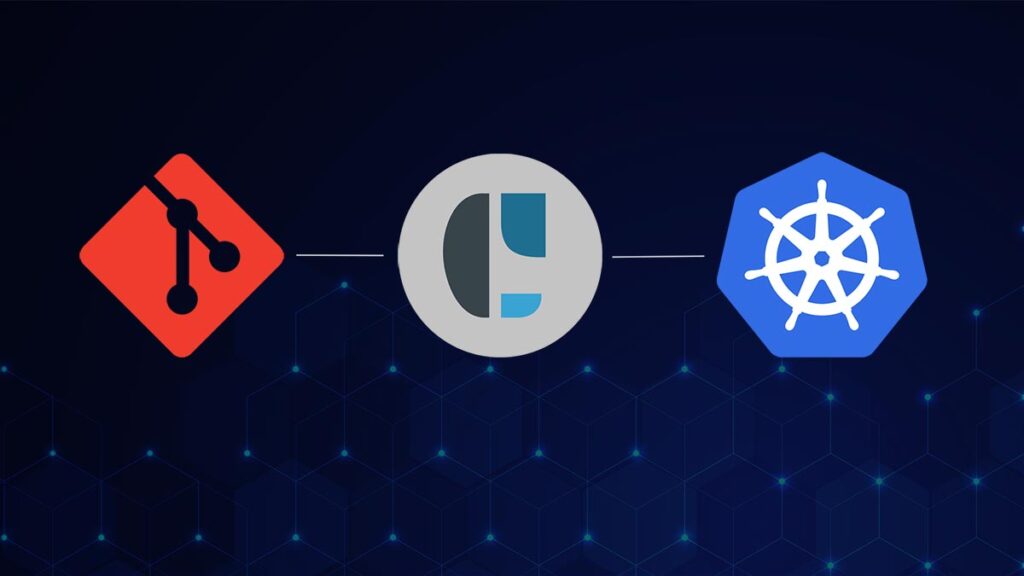GitOps as a software engineering practice has become increasingly popular especially when it comes to applications on Kubernetes. Using a Git repository as its single source of truth, teams commit declarative configurations into Git, and these configurations are used to create environments needed for Continuous Delivery.
Benefits of GitOps.
Optimized GitOps with CAEPE.
However, GitOps management can become unwieldy as repositories multiply. CAEPE handles the latter stages of the GitOps process, ensuring that new configurations are correctly deployed to your Kubernetes clusters wherever they are. In particular, for GitOps on edge and air-gapped infrastructure, CAEPE simplifies automation, deployment, analytics, network slicing, policies & security – making management of even hundreds of edge and air-gapped clusters possible.

Why use CAEPE with GitOps.

CAEPE Continuous Deployment
Manage workloads on Kubernetes anywhere robustly and securely.
- Shores up security by simplifying deployment anywhere, supporting managed services, native Kubernetes, self-hosted, edge and secure airgapped deployment targets.
- Supports GitOps and provides guided, UI-driven workflows for all major progressive delivery strategies.
- Has RBAC built-in, providing inherent enterprise access control for who can deploy.
- Supports extended testing capabilities enabling your team to run different tests quickly and easily.


